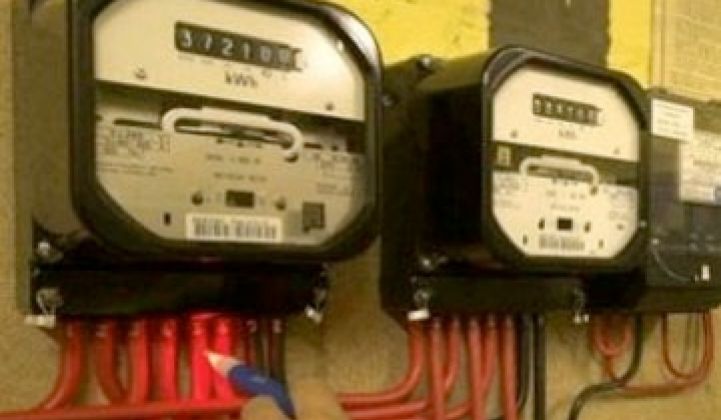Why would a utility want to build its own network for smart grid applications and meter monitoring rather than use existing cellular networks?
Cost is one reason, says Eric Miller, senior vice president of solutions at Trilliant. Utilities might pay $50 per month per house to connect to smart meters via cellular. Smart meters only deliver a little bit of information each time they communicate with a utility, and not consume the bandwidth a person might use on a single phone call. But meters persistently communicate with utilities, so it's tough to get a discount on cellular charges, he said.
To this end, Trilliant today formally unveiled its SecureMesh Bridge products. These product line combines Trilliant's neighborhood-area networking mesh equipment with the wide-area networking equipment it picked up when it bought SkyPilot Networks last year. By combining the two products, Trilliant can effectively offer a complete communications package to utilities based on mesh.
"You can pay for this in one to two years in avoided backhaul charges," he said. Combining the two products also increases security by reducing a hand-off from one network to another. Communication can also be segmented and more easily controlled: a security breach at a home, for instance, can be isolated from the wider neighborhood network.
"They (utilities) have never been comfortable with using the cellular networks. We can provide security and quality of service," Miller added.
The protocol debate promises to become one of the dominant issues in smart grid over the next several years. Various vendors have proposed wireless mesh (Silver Spring Networks, Trilliant), power line networking (Echelon), WiMax and advanced broadband (Grid Net) and cellular (SmartSynch) among other solutions for linking homes, substations, transformers and all of the other machines out there that bring electricity to your house. Some companies have also proposed licensable proprietary standards that potentially could become de facto standards like the long-range networking technology from On-Ramp Wireless. Some have even proposed employing fallow FM bandwidth for smart grid applications.
Utilities have responded by either adopting these technologies for commercial smart grid deployments or at least agreeing to test them in trials. Canada's Hydro One, for instance, has adopted Trilliant's technology while the Tennessee Valley Authority has adopted SmartSynch for its renewable energy programs and Pacific Gas & Electric has made Silver Spring a rising star.
Which ones will win? Right now, no one really knows. These early trials will, potentially, help utilities determine which protocols and technologies work best or which work in particular geographic situations. Other utilities that haven't invested in smart grid trials yet will likely scrutinize what happened in these early projects, so the data and experience that comes out of the early deployments will likely plan an outsized role in the market's development.
The National Institute of Science and Technology has also said it will work to solidify 77 networking standards over the next few years for the grid. A total of 16 are slated for this year with the first ones for home networking due soon. In other words, we're in the midst of a survival of the fittest contest among radios and the winner stands to reap billions in revenue. Stay tuned.
Speaking of Grid Net, Andres Carvallo has become the company's chief strategy officer. Carvallo has been serving as the chief information officer at Austin Energy, one of the leading utilities in smart grid technologies. He's also one of the primary speakers on the smart grid circuit.
In last month's list of the 100 top movers and shakers in the smart grid space, this is what we wrote about Andres: "When you coin the term that spawns an entire industry, as Andres did with 'smart grid,' guess what? You automatically make GTM's Top 100 list. When not thinking up catchy new nomenclature, Andres serves as Chief Information Officer at Austin Energy, where he is responsible for the technology vision, planning, development and operations for one of the most advanced grids in the nation."
It's a definite victory for Grid Net, which specializes in broadband smart grid equipment. The company is based on the premise that utilities will invariably need lots of bandwidth to accommodate future applications like vehicle-to-grid charging or dynamic demand response. Rather than put in mesh networks that provide moderate bandwidth that may need to get upgraded, utilities should install premier equipment now so they won't have to rip out equipment in ten years, Grid Net argues. Grid Net founder Ray Bell once worked at Silver Spring too, adding a touch personal animosity to the technology rivalry between the two companies.
Grid Net has signed a deal with a utility in Australia and is working on other contracts in that country. It has not made the same sort of progress as mesh vendors have in the U.S., but it says that's because it started later.



